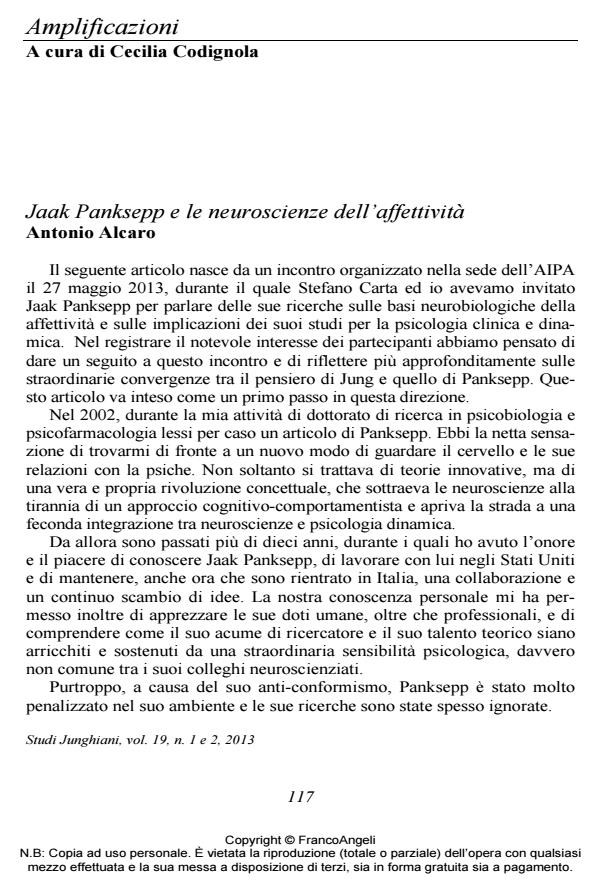Jaak Panksepp and Affective Neuroscience
Journal title STUDI JUNGHIANI
Author/s Antonio Alcaro
Publishing Year 2014 Issue 2013/37-38
Language Italian Pages 13 P. 117-129 File size 672 KB
DOI 10.3280/JUN2013-037008
DOI is like a bar code for intellectual property: to have more infomation
click here
Below, you can see the article first page
If you want to buy this article in PDF format, you can do it, following the instructions to buy download credits

FrancoAngeli is member of Publishers International Linking Association, Inc (PILA), a not-for-profit association which run the CrossRef service enabling links to and from online scholarly content.
Jaak Panksepp is the neuroscientist who more than anyone investigated the cerebral substrates of primary emotions and affective feelings. His studies locate affectivity at the core of individual neuro-psychic organization, and show that affects constitute the bridge between the instinctual archetypical dimension and the personal psyche. Therefore, such studies unexpectedly allow Jungian theories to be rooted into contemporary neuroscience and constitute an occasion for reflexion for researchers and clinical psychologists interested in integrating knowledge.
Keywords: Neuroscience, affect, emotion, archetype, instinct, animal consciousness
- Neuroscienze affettive e implicazioni cliniche. Il dramma della relazione nella scena terapeutica Ugo Morelli, in Ricerca Psicoanalitica /2025
DOI: 10.4081/rp.2025.1010 - Basic Affective Systems and Sex Differences in the Relationship between Anger and Fear Paola Manfredi, in International Journal of Environmental Research and Public Health /2024 pp.1266
DOI: 10.3390/ijerph21101266 - Processi archetipici nella formazione di un sogno e di un delirio: un contributo clinico Paolo Romano, in STUDI JUNGHIANI 39/2014 pp.37
DOI: 10.3280/JUN2014-039003
Antonio Alcaro, Jaak Panksepp e le neuroscienze dell’affettività in "STUDI JUNGHIANI" 37-38/2013, pp 117-129, DOI: 10.3280/JUN2013-037008